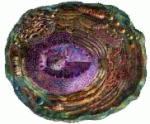Cell Biology
|
11 september 2014 17:20:04 |
| Agent-based modeling of autophagy reveals emergent regulatory behavior of spatio-temporal autophagy dynamics (Cell Communication and Signaling) |
|
Tweet Background:
Autophagy is a vesicle-mediated pathway for lysosomal degradation, essential under basal and stressed conditions. Various cellular components, including specific proteins, protein aggregates, organelles and intracellular pathogens, are targets for autophagic degradation. Thereby, autophagy controls numerous vital physiological and pathophysiological functions, including cell signaling, differentiation, turnover of cellular components and pathogen defense. Moreover, autophagy enables the cell to recycle cellular components to metabolic substrates, thereby permitting prolonged survival under low nutrient conditions. Due to the multi-faceted roles for autophagy in maintaining cellular and organismal homeostasis and responding to diverse stresses, malfunction of autophagy contributes to both chronic and acute pathologies.
Results:
We applied a systems biology approach to improve the understanding of this complex cellular process of autophagy. All autophagy pathway vesicle activities, i.e. creation, movement, fusion and degradation, are highly dynamic, temporally and spatially, and under various forms of regulation. We therefore developed an agent-based model (ABM) to represent individual components of the autophagy pathway, subcellular vesicle dynamics and metabolic feedback with the cellular environment, thereby providing a framework to investigate spatio-temporal aspects of autophagy regulation and dynamic behavior. The rules defining our ABM were derived from literature and from high-resolution images of autophagy markers under basal and activated conditions. Key model parameters were fit with an iterative method using a genetic algorithm and a predefined fitness function. From this approach, we found that accurate prediction of spatio-temporal behavior required increasing model complexity by implementing functional integration of autophagy with the cellular nutrient state. The resulting model is able to reproduce short-term autophagic flux measurements (up to 3?hours) under basal and activated autophagy conditions, and to measure the degree of cell-to-cell variability. Moreover, we experimentally confirmed two model predictions, namely (i) peri-nuclear concentration of autophagosomes and (ii) inhibitory lysosomal feedback on mTOR signaling.
Conclusion:
Agent-based modeling represents a novel approach to investigate autophagy dynamics, function and dysfunction with high biological realism. Our model accurately recapitulates short-term behavior and cell-to-cell variability under basal and activated conditions of autophagy. Further, this approach also allows investigation of long-term behaviors emerging from biologically-relevant alterations to vesicle trafficking and metabolic state. |
| 103 viewsCategory: Cell Biology |
 Cryptococcus inositol utilization modulates the host protective immune response during brain infection (Cell Communication and Signaling) Cryptococcus inositol utilization modulates the host protective immune response during brain infection (Cell Communication and Signaling)Transient TNF regulates the self-renewing capacity of stem-like label-retaining cells in sphere and skin equivalent models of melanoma (Cell Communication and Signaling) 
|
| blog comments powered by Disqus |
MyJournals.org
The latest issues of all your favorite science journals on one page
The latest issues of all your favorite science journals on one page



